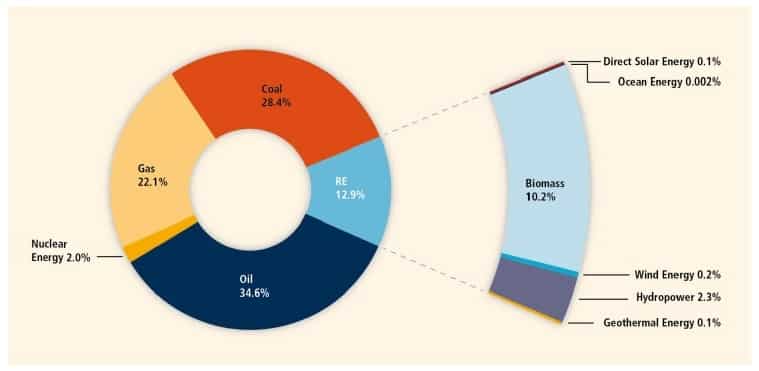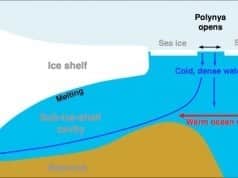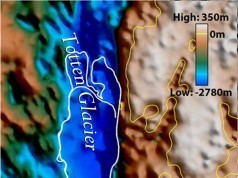Earlier this week the Intergovernmental Panel on Climate Change (IPCC) released a 26-page summary of an upcoming 1,000-page report about renewable energy. While perusing this document I was reminded of remarks by an anonymous IPCC insider who answered a questionnaire last year.
According to this individual, the IPCC sees the world through a distorted lens. That distorted lens now dominates the way most of the planet thinks about climate change:
A relatively incoherent narrative.has been established by the IPCC, and scientific research in the field proceeds by embellishing this established narrative. And the end result is that we are not asking the right questions in the field of climate research. [bold added, see page 97 of this 678-page PDF]
IPCC spokespeople (and myriad scientists associated with it) have repeatedly declared that we face a climate crisis and must reduce our carbon dioxide emissions dramatically in order to prevent horrible things from happening.
But if the IPCC really believes this, why isn’t it developing realistic plans to de-carbonize as quickly as possible? Why isn’t it systematically evaluating courses-of-action A, B, and C? That way we’d all have a better understanding of what our full range of options are, what the strengths and shortcomings of each happen to be, and what the trade-offs look like.
Instead, the IPCC has adopted a moralistic view of the world. There is “good” energy (renewables) and “bad” energy (non-renewables). It only wants to talk about the first category – thus this new 1,000-page report – even though the second category includes options that could dramatically improve the situation in the short term.
For example, the International Energy Agency has observed that:
Countries such as Australia, China, India, Poland and South Africa produce between 69% and 94% of their electricity and heat through the combustion of coal. [bold added, see p. 11 of this 130-page PDF]
In the 21st century people are not about to turn their back on either heat or electricity. If cutting emissions is really the goal, surely the IPCC should be examining how many emissions could be eliminated by switching from high-CO2-emitting coal to non-CO2-emitting nuclear power as an interim step.
Rather than being a theoretical energy source (like wave power), nuclear is proven. Rather than requiring costly infrastructure upgrades in the form of new transmission lines (like wind and solar power), it works with already-existing infrastructure.
If rapid emissions reduction was really the IPCC’s highest priority, wouldn’t it be examining the benefits that could be realized if countries such as those named above embraced nuclear asap? Wouldn’t it be pointing out that France’s low carbon footprint is directly connected to the fact that 80% of its electricity comes from nuclear facilities?
Wouldn’t the IPCC at least be developing two scenarios – the nuclear scenario and the currently-available-renewables scenario – so that an intelligent conversation about realistic rates of emissions cuts (as well as comparative costs) could take place? Wouldn’t it have done all of these things 10 years ago?

The fact that the IPCC has just written a 1,000-page report that concentrates on energy sources that currently supply the world with only 13% of its power demonstrates the blinkered nature of its analysis.
It also demonstrates that, rather than being pragmatic, the people at the heart of the IPCC are idealistic. They don’t merely want to solve a particular problem (too much CO2 in the atmosphere), they want to redesign the entire world. Even though nuclear power would result in significantly fewer emissions, they consider it unacceptable because it doesn’t fit into their far larger, far more grandiose fantasy of a world powered only by energy sources they personally happen to approve of.
Everything I’ve just said about nuclear power applies even more to shale gas. Shale gas is the most exciting new energy development to come along in a while. These are still early days, but natural gas extracted from shale has the potential to dramatically reduce carbon emissions, reduce energy prices, and ensure an inexpensive supply of agricultural fertilizer (thus reducing world hunger).
Professors of ecology are already proclaiming that shale gas is dirtier than coal and journalists are arguing that mining it poses serious environmental risks. Don’t fall for these doom-laden messages before hearing the other side of the story.
Last week the UK-based Global Warming Policy Foundation released a 36-page report titled The Shale Gas Shock. Written by respected science writer Matt Ridley, with a foreword by eminent physicist Freeman Dyson, that report concludes that replacing coal with shale gas would dramatically reduce not only CO2 emissions, but bona fide pollutants as well. As Ridley writes:
unlike burnt coal, burnt shale gas includes no sulphur dioxides, no mercury, and fewer nitrogen oxides.
Ridley reports that natural gas leads to fewer human fatalities than does coal mining, does far less damage to the natural world (no tunneling or mountaintop removal is required), and is significantly friendlier to wildlife than industrial wind installations.
So how many times do you suppose the term “shale gas” comes up in the 26-page summary of the IPCC’s new 1,000-page report. That’s right – not even once.
A world in which our political leaders genuinely think we are at imminent risk from too much CO2 would be a world in which every nation on the planet would be fast-tracking dozens of new nuclear facilities.
A world in which our political leaders genuinely believe humanity’s future is at stake would be one in which governments would be explaining the benefits and promise of shale gas to the public.
Instead, the viewpoint of environmentalists dominates the discussion of both nuclear power and shale gas.
We need no further proof that the environmentalist mindset also dominates the IPCC than the fact that this new report appears to completely ignore the shale gas revolution.
Please try to find the time to download Ridley’s 36-page shale gas report. It’s important that we be fully informed about this matter. Otherwise, the squeaky green wheel will prevail.
I also recommend this blog post over at ClimateQuotes.com. It explains that the only way the IPCC can come up with that 13% number for renewables is if it includes the burning of animal dung (an energy source associated with disease and indoor pollution) by the poorest of the poor.





